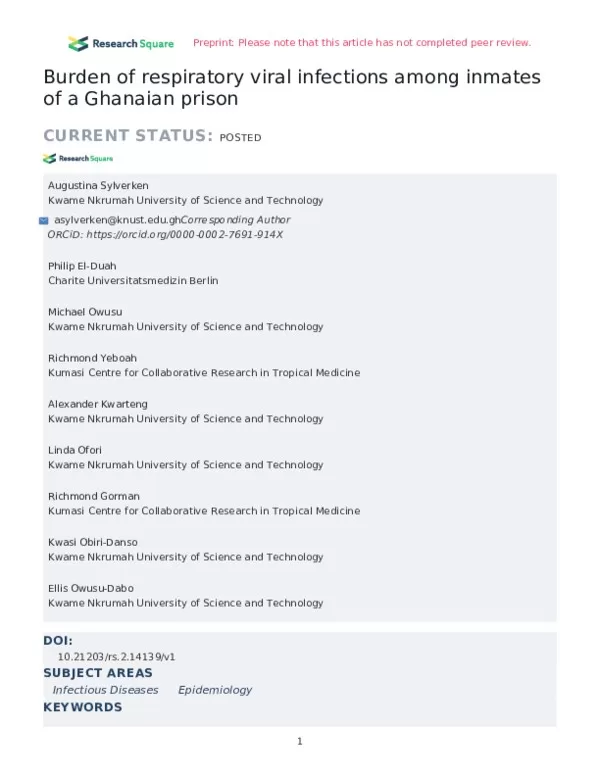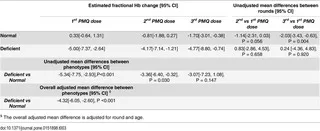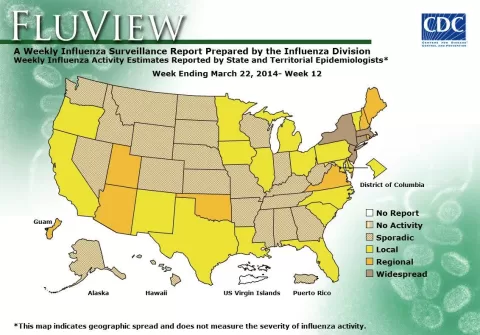Surveillance of viral infections in prisons is a critical public health concern, especially in light of recent outbreaks of COVID-19 in prisons across the globe. In particular, monitoring the transmission dynamics of SARS-CoV-2, including variants such as the Delta variant, is essential for implementing effective prison health measures. As seen in a recent study conducted in a maximum-security prison in Sydney, Australia, a significant percentage of incarcerated individuals tested positive for SARS-CoV-2, highlighting the risks associated with closed environments. This data points to the need for comprehensive surveillance of viral respiratory infections to help mitigate the spread of infections among vulnerable populations. By integrating genomic sequencing with routine testing, prisons can develop better strategies to combat viral outbreaks and safeguard inmate health.
The monitoring of viral outbreaks within correctional facilities represents a vital aspect of public health, particularly during significant health crises such as the COVID-19 pandemic. The dynamics of SARS-CoV-2 transmission in inmate populations require urgent attention, especially with the emergence of variants like Delta. As facilities grapple with high-density living conditions, effective strategies must be established to enhance the surveillance of viral infections, ensuring that necessary health measures are implemented promptly. Regular testing and isolation protocols play a crucial role in managing respiratory infections within such confined spaces. By prioritizing these interventions, correctional institutions can significantly reduce the risk of widespread transmission of infectious diseases.
The Importance of Surveillance of Viral Infections in Prisons
Effective surveillance of viral infections in prisons is critical for understanding the dynamics of outbreaks, especially in high-density environments. As observed during the COVID-19 pandemic, correctional facilities often present unique challenges that exacerbate the spread of infectious diseases. Prior to routine surveillance programs, transmission of SARS-CoV-2 went largely unrecognized, leading to rapid outbreaks within incarcerated populations. Implementing robust surveillance strategies not only aids in identifying cases early but also plays a significant role in controlling the spread of viral respiratory infections.
Surveillance is essential for monitoring the health of prisoners, who may have varying levels of immunity and health status compared to the general population. In a recent study conducted in a maximum-security prison, significant numbers of asymptomatic infections were identified, highlighting the importance of regular testing and monitoring. Surveillance systems that incorporate viral sequencing can help track variants like the Delta variant, enabling health authorities to respond effectively to emerging threats and implement targeted health measures.
Frequently Asked Questions
What is the importance of surveillance of viral infections in prisons?
Surveillance of viral infections in prisons is crucial for monitoring disease outbreaks, especially viruses like SARS-CoV-2. Effective surveillance helps identify asymptomatic cases, track the transmission dynamics, and implement preventive measures timely, thereby protecting both inmates and staff.
How does COVID-19 impact the health measures in prisons?
COVID-19 has significantly influenced prison health measures, necessitating enhanced surveillance of viral infections. Prisons have adopted entry-quarantine, regular testing, and vaccination protocols to curb the spread of SARS-CoV-2, especially during outbreaks like the Delta variant.
What are the key findings from the Delta variant outbreak surveillance in a maximum-security prison?
During the Delta variant outbreak, surveillance revealed that a substantial number of infections were asymptomatic, highlighting the need for routine testing and vigilant monitoring. Factors like housing location and cellmate relationships were pivotal in understanding SARS-CoV-2 transmission within the prison.
Why is routine testing important for surveillance of viral respiratory infections in correctional facilities?
Routine testing is essential for surveillance of viral respiratory infections in correctional facilities, as it enables the early detection of cases, enhances understanding of transmission patterns, and informs public health interventions needed to control outbreaks like those caused by SARS-CoV-2.
What role does vaccination play in the surveillance of viral infections in prisons?
Vaccination plays a vital role in the surveillance of viral infections in prisons by reducing the risk of severe illness and mitigating the spread of infections like SAR-CoV-2. Combining vaccination efforts with continuous surveillance enhances the overall health measures implemented within correctional environments.
How did housing arrangements affect SARS-CoV-2 transmission in the studied prison?
Housing arrangements significantly affected SARS-CoV-2 transmission in the studied prison, as inmates in quarantine units faced higher infection risks. Shared locations and cellmate exposures were critical factors influencing the spread of the virus, emphasizing the need for strategic housing to enhance infection control.
What methods are effective for surveillance of viral infections in prisons?
Effective methods for surveillance of viral infections in prisons include nucleic acid testing (NAT), routine screening, genomic sequencing to track variants, and implementing comprehensive public health responses, including strategic housing and vaccination programs to minimize viral transmission.
What challenges are faced in the surveillance of viral infections within correctional facilities?
Challenges in the surveillance of viral infections within correctional facilities include the high population density, limited healthcare access, asymptomatic cases going undetected, and the potential for stigma and isolation among infected individuals, all of which complicate effective monitoring and intervention.
| Key Point | Details |
|---|---|
| Purpose of Study | To investigate SARS-CoV-2 transmission dynamics using surveillance data and viral sequencing in a max-security prison during a Delta variant outbreak. |
| Sample Size | 1,562 incarcerated individuals were studied, with 169 diagnosed with SARS-CoV-2 (11%). |
| Testing Approach | Routine testing through nucleic acid testing (NAT) and extensive surveillance revealed significant unrecognized transmissions. |
| Key Findings | Infection risk was associated with housing location, cellmates, and vaccination status; 4 viral subvariants indicated multiple introductions. |
| Effective Strategies | Mass testing, entry-quarantine, strategic housing, and vaccination were critical in reducing transmission. |
| Conclusion | The study highlights the need for continuous surveillance and public health strategies in correctional settings to prevent outbreaks. |
Summary
Surveillance of viral infections in prisons is essential to effectively manage outbreaks and protect public health. The study conducted in a maximum-security prison in Australia revealed significant SARS-CoV-2 transmission, mostly asymptomatic, driven by housing conditions and vaccination status. Implementing routine testing, strategic housing, and mass vaccination can help mitigate risks and contain infectious diseases in correctional facilities. These findings underscore the importance of an integrated approach to surveillance and public health within prison environments.
The content provided on this blog (e.g., symptom descriptions, health tips, or general advice) is for informational purposes only and is not a substitute for professional medical advice, diagnosis, or treatment. Always seek the guidance of your physician or other qualified healthcare provider with any questions you may have regarding a medical condition. Never disregard professional medical advice or delay seeking it because of something you have read on this website. If you believe you may have a medical emergency, call your doctor or emergency services immediately. Reliance on any information provided by this blog is solely at your own risk.








